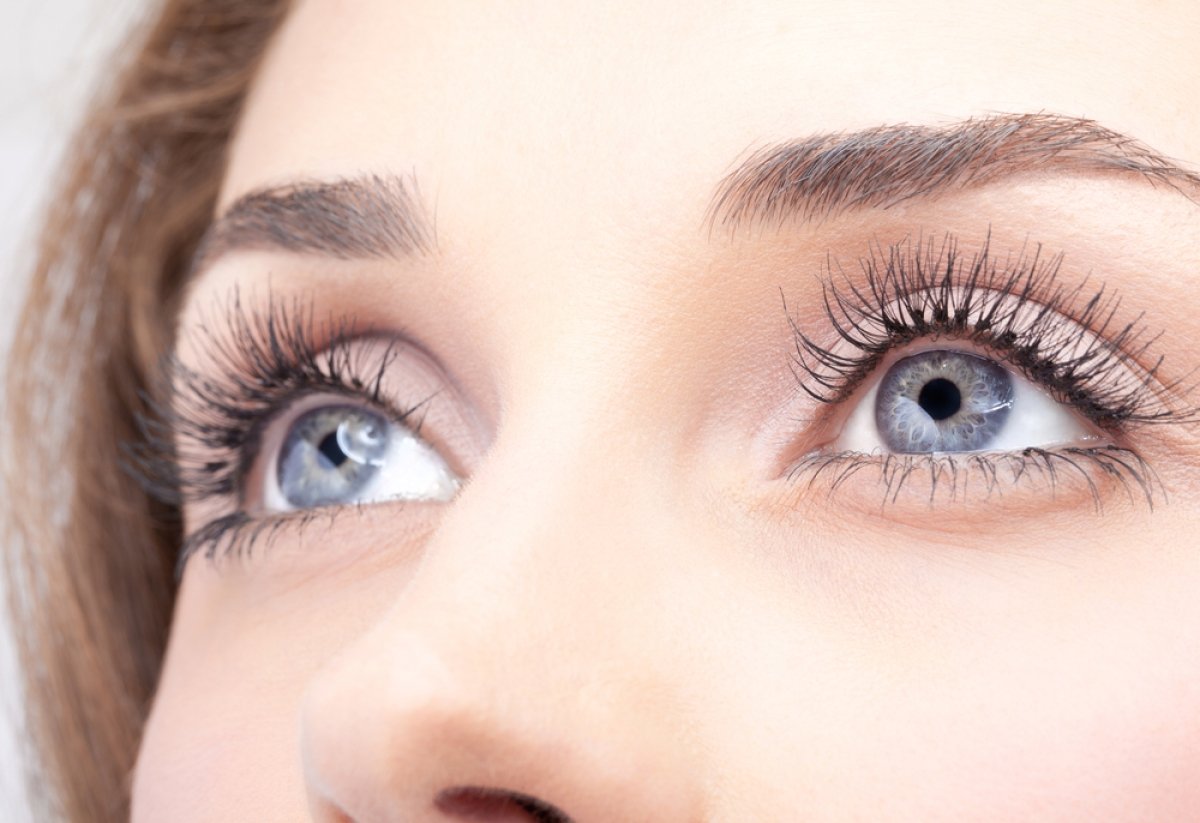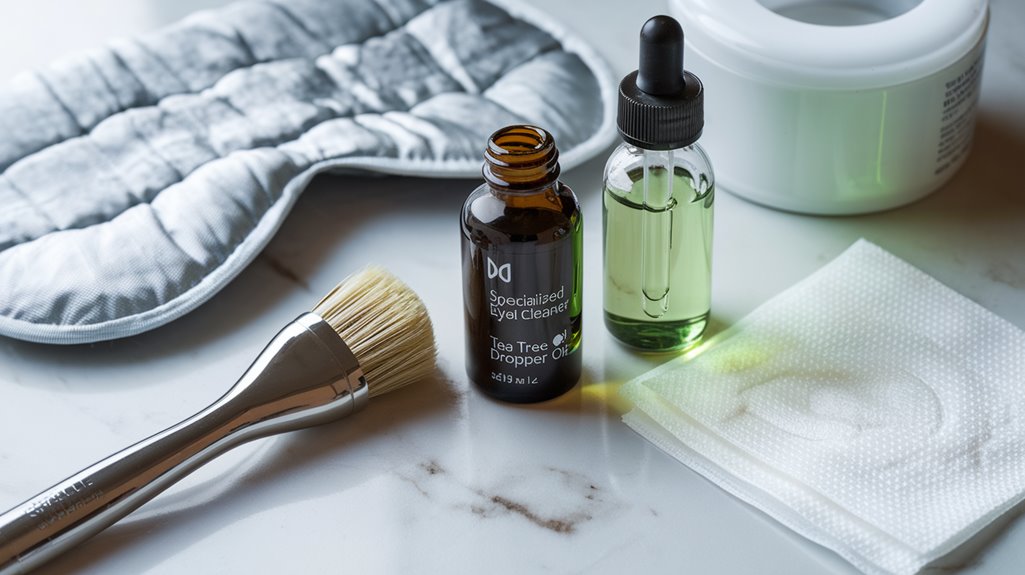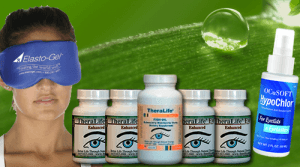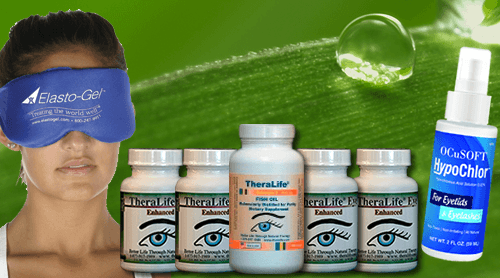TheraLife.com offers a comprehensive approach to managing blepharitis, emphasizing the importance of both lifestyle changes and targeted treatments. Their products focus on natural solutions that promote eyelid hygiene and overall eye health. Daily routines may include using warm compresses and hypoallergenic lid scrubs to effectively reduce bacteria and inflammation. TheraLife also recommends supplementing with omega-3 fatty acids and vitamins to support sustained eye health.
For those experiencing severe symptoms, TheraLife suggests consulting an eye care professional about prescription medications or exploring advanced therapies. Their platform provides insights into specific products and home remedies tailored to individual needs, aiming for the best results in blepharitis management. Additionally, TheraLife products are designed to be gentle yet effective, offering natural relief for various eye-related conditions.
TheraLife’s commitment to improving eye health is reflected in their range of products, which cater to different aspects of blepharitis and related conditions. By utilizing TheraLife’s resources, customers can gain a deeper understanding of their condition and access solutions that fit their lifestyle and preferences.
Best Blepharitis Treatment From TheraLife
Add To CartKey Takeaways
- Regular eyelid cleansing with a warm, damp cloth and commercial lid scrubs helps remove debris and reduce inflammation.
- Warm compresses applied twice daily improve blood circulation and soften secretions for effective eyelid hygiene.
- Over-the-counter treatments with soothing ingredients like hyaluronic acid maintain moisture and reduce irritation on eyelids.
- Prescription antibiotics and corticosteroid drops help manage severe inflammation under medical supervision.
- Dietary changes, including omega-3 fatty acids and vitamins, support eye health and reduce inflammation associated with blepharitis.
Understanding Blepharitis: Causes and Symptoms
Blepharitis often arises from inflammation of the eyelid margins and can be a result of various factors, including bacterial colonization, dysfunction of the meibomian glands, or underlying skin conditions such as rosacea or seborrheic dermatitis. Understanding these causes is essential for effective symptom recognition and management. Bacterial colonization, particularly by Staphylococcus species, can exacerbate inflammation, leading to redness, swelling, and irritation. Dysfunction of the meibomian glands often results in dry eyes, contributing to further discomfort. Recognizing symptoms such as itching, burning, and crusting at the eyelid edges can help in identifying the underlying cause. Contaminated eye makeup can lead to blepharitis and conjunctivitis, with symptoms worsening with continued use. Accurate causes overview enables targeted treatment strategies, addressing both the symptoms and the root factors contributing to blepharitis. Identifying these can greatly enhance patient outcomes.
Importance of Proper Eyelid Hygiene
Maintaining proper eyelid hygiene is essential in managing blepharitis effectively. You should establish a daily cleaning routine using effective cleansing techniques to remove debris and bacteria. Consider using recommended cleaning products like diluted baby shampoo or commercially available lid scrubs to guarantee the best results. Incorporating omega-3 fatty acids into your routine can also help reduce inflammation and improve symptoms of blepharitis.
Daily Cleaning Routine
A consistent daily cleaning routine plays an essential role in managing blepharitis effectively. Establishing daily habits for eyelid hygiene can greatly reduce symptoms by removing debris and bacteria. Proper cleaning tools, such as sterile wipes or gentle cleansers, are vital in maintaining this routine. Use these tools to gently clean your eyelid margins, preventing further irritation or infection. Consistency in this practice can help control inflammation and keep symptoms at bay. Incorporating specialized eyelid cleansers, like Avenova Eyelid Cleanser, can enhance the effectiveness of your routine by significantly reducing microbial load and ocular surface inflammation.
Effective Cleansing Techniques
To effectively manage blepharitis, understanding proper eyelid hygiene techniques is vital. Regular cleansing reduces inflammation by removing debris and bacteria. Cleanse gently with a warm, damp cloth, applying light pressure to the eyelid margins. This technique aids in loosening crusts and unclogging oil glands. Alternative therapies, such as warm compresses, can enhance the effectiveness of cleansing by softening secretions, making them easier to remove. Consider holistic approaches like incorporating dietary adjustments, which can support overall eye health, potentially reducing blepharitis symptoms. Omega-3 fatty acids have shown efficacy in improving gland function. Consistency in these practices is essential; irregular hygiene can exacerbate symptoms. By maintaining a disciplined routine, you can mitigate flare-ups and promote healthier eyelids. Furthermore, addressing the immune inflammatory mechanisms involved in dry eye disease can help in managing blepharitis effectively.
Recommended Cleaning Products
Building on the importance of consistent eyelid hygiene, selecting the right cleaning products plays a pivotal role in managing blepharitis effectively.
Opt for products containing natural ingredients like tea tree oil or chamomile, as they’re shown to reduce inflammation and bacterial load. Evidence suggests that these ingredients can soothe irritation while maintaining the delicate balance of the eyelid environment.
Product recommendations include eyelid cleansers specifically formulated for blepharitis, often available in wipes or foams. These formulations guarantee thorough cleansing without causing additional irritation.
When choosing a product, verify its hypoallergenic properties to prevent allergic reactions. Incorporating these targeted products into your daily routine can greatly improve symptoms, promoting ocular health and comfort.
Prioritize products with clinical endorsements for best results. Scientific studies indicate that tea tree oil is effective in mitigating symptoms of Demodex-related blepharitis, making it a recommended choice for maintaining eyelid hygiene.
Best Blepharitis Treatment From TheraLife
Add To CartHome Remedies for Blepharitis Relief
To alleviate blepharitis symptoms at home, start with applying warm compresses to your eyelids, which can improve blood circulation and help loosen any crusts. Following this, maintain lid hygiene by gently cleaning your eyelid margins with a diluted baby shampoo or a commercial eyelid scrub, reducing bacterial load and inflammation. Consistent practice of these remedies can effectively manage blepharitis symptoms and prevent flare-ups. Posterior blepharitis affects the Meibomian glands and is linked to skin conditions like rosacea and dandruff, making regular eyelid hygiene even more crucial.
Warm Compress Benefits
Applying a warm compress is one effective home remedy for managing blepharitis symptoms. By using specific warm compress techniques, you can alleviate discomfort and promote eyelid health. The heat from the compress helps to unclog oil glands and improve blood circulation in the eyelids, which can reduce inflammation. For ideal results, apply the compress with a clean, damp cloth heated to a comfortable temperature. The recommended warm compress frequency is at least twice daily, particularly in the morning and evening, to maintain consistent relief. Each session should last about 5 to 10 minutes, ensuring the warmth is sustained throughout. Regular application can greatly improve symptoms, providing a simple yet effective way to manage blepharitis at home. To enhance effectiveness, consider therapeutic options like heated eye masks or microwavable gel packs, which deliver consistent heat and facilitate natural drainage.
Lid Hygiene Practices
While warm compresses effectively manage blepharitis, incorporating lid hygiene practices enhances symptom relief and promotes eyelid health.
Consistent lid hygiene is essential in reducing eyelid bacteria accumulation, a common contributor to blepharitis. Start by gently cleansing your eyelids with a diluted baby shampoo or a commercially available eyelid scrub. This helps remove debris and excess oils that harbor bacteria.
Use a clean, soft cloth or cotton pad to avoid irritation. Be thorough yet gentle to prevent exacerbating inflammation. Practicing this daily regimen minimizes bacterial load and reduces the frequency of blepharitis flare-ups.
Furthermore, lid hygiene contributes to overall eyelid health by maintaining the natural barrier function of the skin, thereby preventing further complications associated with chronic blepharitis.
Over-the-Counter Treatments to Consider
Several over-the-counter treatments can effectively manage blepharitis symptoms, offering relief without a prescription. One popular option is the use of over-the-counter gels.
These gels often contain soothing ingredients like hyaluronic acid, which helps maintain moisture on the eyelids, reducing irritation. Herbal treatments also provide an alternative approach, leveraging natural anti-inflammatory properties.
For instance, tea tree oil, available in diluted forms, can target Demodex mites often associated with blepharitis. Chamomile extracts, known for their calming effects, may also help alleviate symptoms.
When selecting these treatments, verify they’re specifically formulated for ophthalmic use to avoid further irritation. Regular eyelid hygiene is crucial as it can significantly reduce the occurrence of blepharitis and prevent flare-ups.
Best Blepharitis Treatment From TheraLife
Add To CartPrescription Medications for Severe Cases
For cases of blepharitis that don’t respond to over-the-counter treatments, prescription medications may be necessary. Topical antibiotics can help reduce bacterial load and inflammation. Corticosteroid drops may also be prescribed to manage inflammation effectively. These medications can alleviate symptoms and prevent recurrences. It’s essential to use them under medical supervision to avoid potential side effects. Chronic cases of blepharitis often require interdisciplinary consultation to address systemic issues that may contribute to the condition.
| Medication Type | Purpose | Considerations |
|---|---|---|
| Topical Antibiotics | Reduce bacterial load | Use as prescribed to prevent resistance |
| Corticosteroid Drops | Manage inflammation | Short-term use advised to minimize risks |
| Combination Therapy | Antibiotics + Steroids | Monitor for adverse effects |
Your healthcare provider will tailor the treatment based on your specific condition and medical history, ensuring best results for severe blepharitis cases. Always follow their guidance for safe and effective management.
The Role of Warm Compresses and Lid Scrubs
Effective management of blepharitis often includes non-pharmacological measures such as warm compresses and lid scrubs.
Warm compresses benefit individuals by loosening crusts, improving oil gland function, and relieving eyelid inflammation. To apply, use a clean, warm cloth over closed eyelids for 5-10 minutes. This technique enhances blood circulation and helps in softening debris around the eyelids.
Lid scrub techniques are essential in maintaining eyelid hygiene. Use a gentle cleanser or dilute baby shampoo on a cotton pad or clean cloth. Carefully scrub the eyelid margin, focusing on the lash line to remove scales and bacteria.
Both methods should be performed daily to effectively manage symptoms and prevent flare-ups. These practices offer a practical, evidence-based approach to alleviating blepharitis.
Diet and Lifestyle Changes for Better Eye Health
When it comes to enhancing eye health, incorporating specific dietary and lifestyle changes can make a significant difference in managing blepharitis. Evidence suggests that omega-3 fatty acids, found in fish like salmon and flaxseed, have a positive nutrition impact on reducing inflammation associated with blepharitis.
Ensuring adequate intake of vitamins A, C, and E also supports overall eye health, as these nutrients are essential for maintaining the integrity of ocular tissues.
Additionally, adopting healthy lifestyle habits is vital. Regular exercise, adequate sleep, and stress management contribute to better eye health by promoting circulation and reducing stress-related inflammation.
Avoiding smoking and limiting alcohol intake further enhance these benefits. By prioritizing these dietary and lifestyle changes, you can effectively manage blepharitis and support long-term eye health.
Advanced Therapies and Technological Innovations
Although traditional treatments provide relief, advanced therapies and technological innovations are transforming blepharitis management.
Novel therapies like intense pulsed light (IPL) and thermal pulsation systems target the meibomian glands, enhancing lipid secretion and reducing inflammation. These approaches offer promising outcomes for those with meibomian gland dysfunction, a common blepharitis cause.
Digital advancements further optimize treatment strategies. Devices equipped with artificial intelligence analyze eyelid margin images, providing precise diagnostics and personalized treatment plans. This technology streamlines care, allowing for real-time monitoring of treatment efficacy.
Furthermore, telemedicine platforms facilitate remote consultations, ensuring continuity of care. By embracing these innovations, you can access cutting-edge solutions, improving blepharitis management and potentially enhancing your quality of life.
Consulting With an Eye Care Professional
Consulting with an eye care professional is essential for accurate diagnosis and effective management of blepharitis. They possess the expertise to differentiate blepharitis from other ocular conditions through thorough examinations.
Your eye care professional may employ slit-lamp biomicroscopy to assess eyelid margins and identify signs of inflammation. Professional recommendations often include tailored treatment plans that consider the severity and underlying causes of your condition.
These may involve warm compresses, eyelid hygiene, and potential prescription medications for bacterial or inflammatory control. Regular follow-ups with an eye care specialist guarantee treatment efficacy and allow for adjustments as needed.
Trusting a knowledgeable professional ensures that you receive personalized care, optimizing outcomes and maintaining ocular health. Prioritize specialist consultation for extensive blepharitis management.
Best Blepharitis Treatment From TheraLife
Add To CartFrequently Asked Questions
Can Blepharitis Cause Long-Term Vision Problems?
You’re wondering if blepharitis can cause long-term vision problems.
Chronic inflammation from blepharitis rarely leads to severe vision impairment, but it’s possible. Persistent inflammation can cause scarring on the eyelid edges, affecting the tear film’s stability and potentially leading to dry eye syndrome.
Dryness and irritation can cause blurred vision over time. Managing symptoms effectively reduces risks of complications.
Regular eye check-ups help monitor and address any potential vision issues early.
Is Blepharitis Contagious to Others?
Blepharitis transmission isn’t typical since it’s not considered contagious.
However, hygiene practices play a pivotal part in preventing its spread. Proper personal care can prevent potential problems.
Patients should prioritize precise procedures like cleaning eyelids with baby shampoo, avoiding eye makeup sharing, and not touching eyes with dirty fingers.
Although it doesn’t directly spread, bacteria involved can move from person to person, underscoring that clean habits curb complications effectively.
How Can Stress Influence Blepharitis Flare-Ups?
Stress can greatly influence blepharitis flare-ups by triggering inflammatory responses. You can manage these effects through stress management and effective coping strategies.
Evidence suggests that stress elevates cortisol levels, which can exacerbate inflammation in eyelid tissues. By incorporating techniques like mindfulness, regular exercise, and proper sleep, you can reduce stress-induced flare-ups.
It’s essential to recognize stressors and adopt personalized strategies to mitigate their impact on your blepharitis symptoms.
Are Certain Cosmetics Safe to Use With Blepharitis?
When you have blepharitis, choosing the right cosmetics is essential.
Opt for hypoallergenic makeup choices and fragrance-free skincare routines to minimize irritation. Evidence suggests that avoiding waterproof mascara and eyeliner can prevent exacerbations.
Regularly clean your brushes and replace makeup to avoid bacterial buildup. Always read labels for non-comedogenic ingredients.
Can Blepharitis Be Linked to Other Health Conditions?
Did you know that up to 60% of people with blepharitis experience it alongside other health issues?
Blepharitis symptoms can often be linked to underlying conditions like rosacea or seborrheic dermatitis.
It’s vital to take into account these associations, as addressing the root causes may alleviate symptoms more effectively.
Regularly consult a healthcare professional to evaluate any potential links and guarantee a thorough approach to managing your blepharitis symptoms.
Best Blepharitis Treatment From TheraLife
Add To CartConclusion
Theralife.com offers a comprehensive approach to treating blepharitis by prioritizing eyelid hygiene and providing products that support this goal. Their offerings include natural supplements designed to improve eye health, reduce inflammation, and provide relief from persistent blepharitis symptoms. These products complement traditional treatments and home remedies, offering a holistic strategy for managing blepharitis.
By incorporating lifestyle changes, such as using warm compresses and practicing good eyelid hygiene, alongside Theralife’s products, customers can achieve lasting relief and improved eye health. Additionally, Theralife emphasizes the importance of consulting with eye care professionals for persistent symptoms, potentially recommending prescription medications or advanced therapies as needed.
With a focus on natural and effective solutions, Theralife aims to provide their customers with the tools they need to thoroughly address blepharitis, leading to enhanced eye comfort and health.





